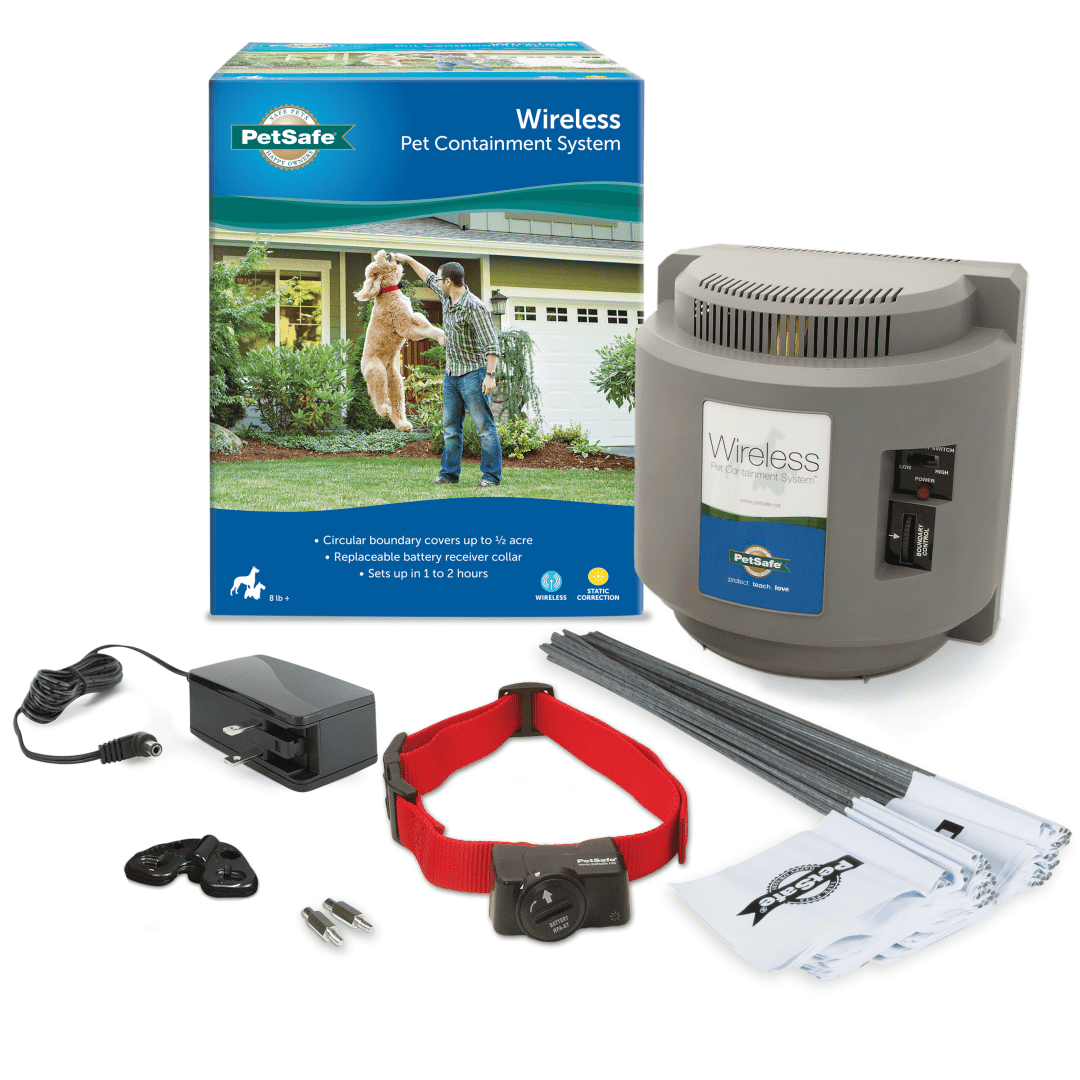Are you considering installing a pet-containment fence in your yard but not sure where to start? Look no further, because in this article, we will delve into all aspects of pet-containment fencing. From understanding the different types of fences available to the benefits and considerations to keep in mind, you’ll find everything you need to know right here.
In the upcoming sections, we will cover the various types of pet-containment fencing, including electric fences, invisible fences, and traditional wooden or metal fences. We’ll discuss the pros and cons of each, helping you make an informed decision based on your specific needs and the needs of your furry friend. Additionally, we’ll address common questions and concerns you might have, such as how to train your pet to respect the boundaries of the fence and how to maintain the fence to ensure its effectiveness.
Whether you’re a new pet owner or someone who’s looking to update their existing pet-containment system, this article will serve as your comprehensive guide. So, get ready to learn more and gain valuable insights to help you choose and maintain the perfect pet-containment fence for your beloved four-legged companion. Stay tuned for this informative and engaging article coming soon on our blog website!
All About Pet-Containment Fencing
Pet-Containment Fencing is a popular solution for pet owners who want to provide their pets with a safe and secure outdoor environment. In this article, we will explore the definition of pet-containment fencing, how it works, the different types available, the benefits it offers, factors to consider when choosing the right fencing system, installing and training pets, maintenance and care, common issues and troubleshooting, legal considerations, alternatives to pet-containment fencing, tips for choosing a provider, and the costs associated with it.
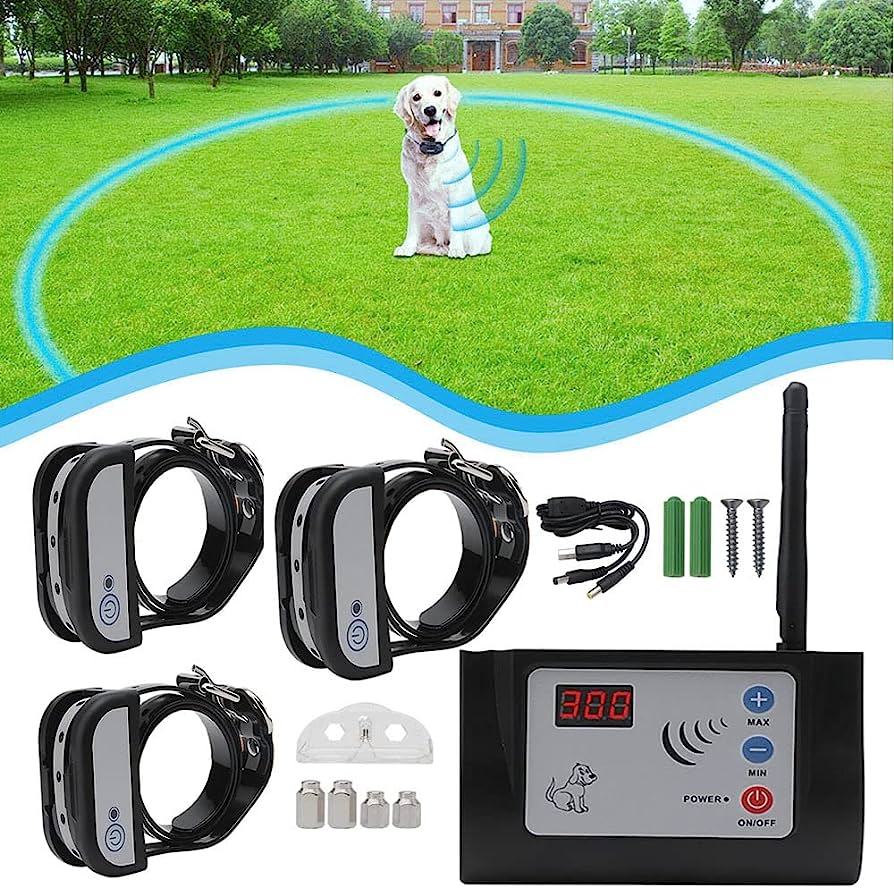
What is Pet-Containment Fencing?
Pet-Containment Fencing refers to a system designed to keep pets within a specific boundary, preventing them from wandering off and potentially getting into trouble or danger. It serves as an alternative to traditional physical fencing and allows pets to enjoy outdoor freedom while ensuring their safety. Pet-containment fencing typically involves the use of signals, barriers, or deterrents to deter pets from crossing the designated boundaries.
Definition of pet-containment fencing
Pet-containment fencing is a system that provides a designated boundary for pets, preventing them from leaving the premises and ensuring their safety. It utilizes various technologies, such as wireless, in-ground, electric, or physical barriers, to establish boundaries and discourage pets from crossing them.
How pet-containment fencing works
The working mechanism of pet-containment fencing depends on the type of system chosen. Wireless pet-containment fencing operates through the use of a central transmitter that emits a radio signal to create a circular boundary. The pet wears a receiver collar that receives signals from the transmitter. If the pet approaches the boundary, the receiver collar emits a warning tone or mild correction signal to deter the pet from crossing.
In-ground pet-containment fencing uses a buried wire to establish the boundaries. The wire is installed around the perimeter of the desired area, and the pet wears a receiver collar that senses the signal emitted by the wire. When the pet approaches the boundary, it receives a warning stimulus to discourage further movement.
Electric pet-containment fencing is similar to in-ground fencing but utilizes an electric shock instead of a warning stimulus to discourage pets from crossing the boundary. The electrical shock is delivered through the receiver collar and is typically set at a level that is safe and effective for the pet.
Physical pet-containment fencing refers to traditional physical barriers, such as wooden or metal fences, that create a visible and physical boundary to prevent pets from escaping. This type of fencing does not rely on technology but provides a solid and secure enclosure for pets.
Different Types of Pet-Containment Fencing
There are several different types of pet-containment fencing available in the market. Each type has its own advantages and considerations, depending on the specific needs and preferences of the pet owner.
Wireless pet-containment fencing
Wireless pet-containment fencing is a popular choice for pet owners who do not want to install physical barriers or bury wires. This type of fencing uses a central transmitter and a receiver collar to establish a circular boundary for the pet. The transmitter emits a radio signal, and when the pet approaches the boundary, the receiver collar emits a warning tone or correction signal. Wireless pet-containment fencing is easy to set up and offers flexibility in adjusting the boundaries.
In-ground pet-containment fencing
In-ground pet-containment fencing involves burying a wire around the perimeter of the desired boundary. The wire emits a signal, and when the pet approaches the boundary, the receiver collar emits a warning stimulus. In-ground pet-containment fencing is customizable and can be adapted to suit various property layouts. It provides a reliable and effective means of containment, especially for large or irregularly shaped areas.
Electric pet-containment fencing
Electric pet-containment fencing is similar to in-ground fencing, but instead of a warning stimulus, it delivers a mild electric shock to the pet to deter them from crossing the boundary. The electric shock is safe for pets and acts as a deterrent rather than causing harm. Electric pet-containment fencing is suitable for pets that require a stronger deterrent and have a tendency to challenge traditional boundaries.
Physical pet-containment fencing
Physical pet-containment fencing refers to traditional fencing made of materials such as wood, metal, or vinyl. This type of fencing provides a secure and visible boundary for pets, preventing them from escaping and keeping them safe within the designated area. Physical pet-containment fencing offers durability and can be customized based on property and aesthetic requirements.
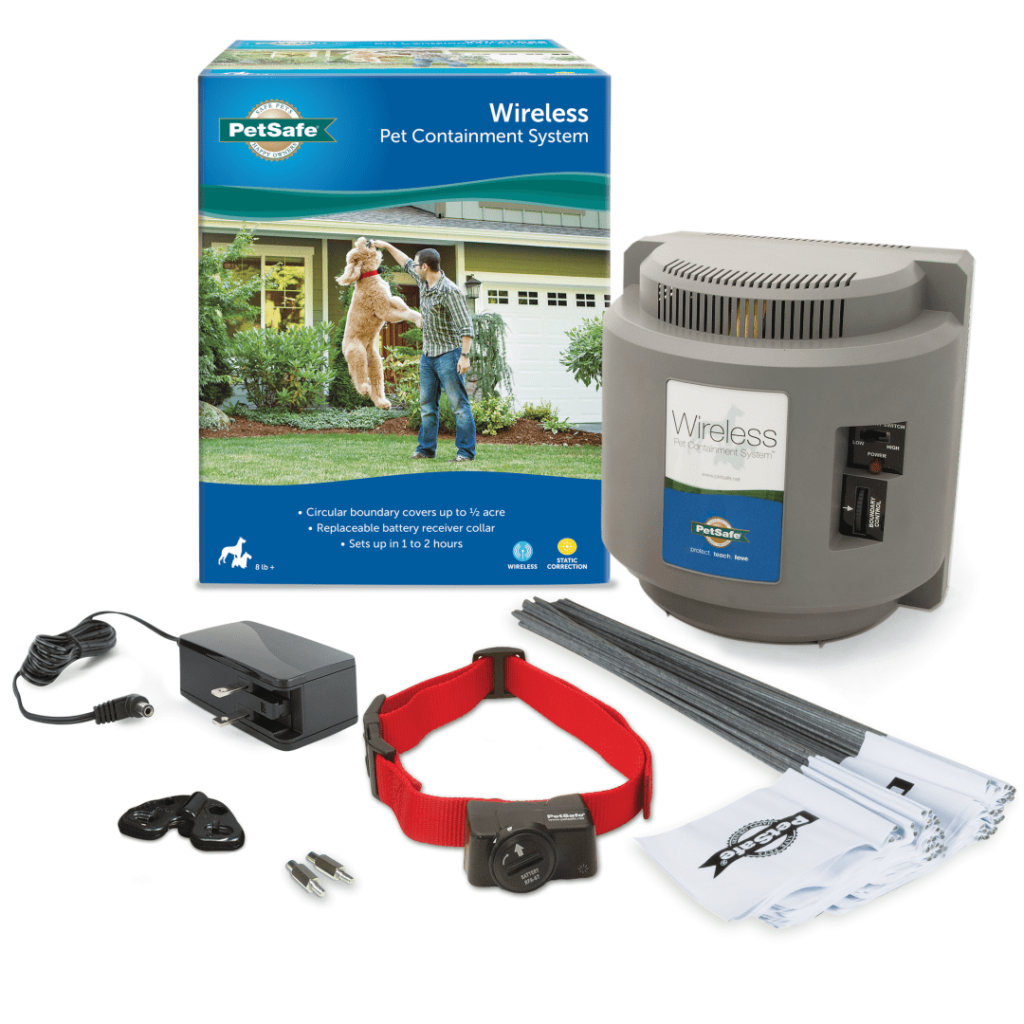
Benefits of Pet-Containment Fencing
Pet-containment fencing offers several benefits for both pets and their owners. Let’s explore some of the key advantages:
Providing safety for pets
One of the primary benefits of pet-containment fencing is ensuring the safety of pets. By establishing a designated boundary, pet owners can prevent their pets from wandering off into potentially dangerous situations such as busy roads, neighboring properties, or areas with potential hazards. Pet-containment fencing provides peace of mind, knowing that pets are safe within the enclosed area.
Preventing pets from escaping
Many pets have a natural instinct to explore their surroundings, which can lead to them escaping from their homes or yards. Pet-containment fencing acts as a physical or psychological barrier that discourages pets from attempting to escape. It serves as a reliable means of confinement, keeping pets within their intended spaces and preventing them from running away.
Protecting pets from outside dangers
The world outside our homes is filled with potential dangers for pets. From traffic accidents to encounters with aggressive animals, the risks are numerous. Pet-containment fencing creates a secure environment, shielding pets from these external threats and reducing the likelihood of accidents or injuries. It allows pets to enjoy outdoor time while minimizing potential hazards.
Allowing pets to have outdoor freedom
Pets thrive on outdoor activities and exercise. Pet-containment fencing enables pets to have the freedom to run, play, and explore within the boundaries of their designated area. It eliminates the need for constant supervision or confinement indoors, providing pets with the opportunity to engage in natural behaviors while ensuring their safety.
Factors to Consider When Choosing Pet-Containment Fencing
When selecting a pet-containment fencing system, it is important to consider several factors to ensure the most suitable option for both the pet and the property. Here are some key factors to keep in mind:
Size and breed of the pet
The size and breed of the pet play a crucial role in determining the type of pet-containment fencing that would be most effective. Larger or more active breeds may require stronger deterrents, while smaller pets may be sufficiently contained with less intense stimuli. Consider the specific needs and characteristics of the pet to choose a system that suits their requirements.
Property size and layout
The size and layout of the property are important considerations when selecting a pet-containment fencing system. Different systems have limitations in terms of coverage area, and some may be more suitable for smaller properties while others are better suited for larger areas or properties with irregular shapes. It is essential to choose a system that can effectively cover the desired area and accommodate the unique layout of the property.
Installation and maintenance requirements
Different pet-containment fencing systems have varying installation and maintenance requirements. Wireless systems are generally easier to install and require minimal maintenance, while in-ground systems may involve more extensive installation involving burying wires around the perimeter. Consider the installation process, the equipment required, and the ongoing maintenance needs to choose a system that aligns with your capabilities and preferences.
Budget considerations
Pet-containment fencing systems vary in price, and affordability is an important factor to consider. Set a budget and determine the features and quality you desire within that budget. Compare prices, read customer reviews, and consider the long-term costs associated with maintenance and potential repairs. It is essential to find a balance between cost-effectiveness and the effectiveness of the system.

Installing Pet-Containment Fencing
Installing a pet-containment fencing system involves several steps to ensure its effectiveness and efficiency. Let’s discuss the installation process in detail:
Determining the boundary
Before installation, it is essential to determine the boundary within which the pet will be confined. Assess the size of the property and consider any specific areas or zones that need to be excluded from the boundary, such as gardens or swimming pools. Mark out the desired boundary and ensure it is clearly defined.
Preparing the area for installation
Prepare the area by removing any obstacles, debris, or vegetation along the boundary. This will make it easier to install the system and ensure proper functionality. Clear the area of any potential hazards that may interfere with the functioning of the pet-containment fencing system.
Installing the fencing system
Follow the manufacturer’s instructions and guidelines to install the chosen pet-containment fencing system. For wireless systems, set up the central transmitter in a suitable location, ensuring it is powered and connected correctly. In-ground systems require burying the wire around the perimeter, securing it to the ground with staples or hooks. Install the receiver collar following the manufacturer’s instructions, ensuring it fits properly and comfortably on the pet.
Testing the system for effectiveness
After installation, it is crucial to test the pet-containment fencing system to ensure it is functioning properly. Walk with the pet towards the boundaries and observe the response of the receiver collar. Adjust the system if necessary, including the distance of the boundary or the intensity of the stimuli, to ensure the pet understands and respects the boundaries. Regularly test the system to maintain its effectiveness.
Training Pets to Use Pet-Containment Fencing
Training petsto use a pet-containment fencing system is an integral part of ensuring their safety and effectiveness. Here are some steps to consider when training pets:
Introducing pets to the boundaries
Upon installing the pet-containment fencing system, gradually introduce the pet to the boundaries of the designated area. Allow them to explore the space while closely monitoring their behavior. Use positive reinforcement, such as treats and praise, to create a positive association with the boundary area.
Teaching pets the warning signals
Familiarize pets with the warning signals emitted by the pet-containment fencing system. When the pet approaches the boundaries, the system will emit a tone or warning stimulus. Teach the pet that this signal signifies that they have reached the boundary and should retreat or stay within the designated area. Repeat this process until the pet associates the signal with the boundaries.
Using positive reinforcement during training
Positive reinforcement is key to training pets with a pet-containment fencing system. Reward pets with treats, praise, or playtime whenever they respond appropriately to the warning signals or when they stay within the designated boundaries. This positive reinforcement will encourage the pet to understand and respect the boundaries, making the training process more effective and enjoyable.
Addressing any challenges during training
Training pets with a pet-containment fencing system may present challenges, particularly if they are stubborn or have a strong tendency to challenge boundaries. Be patient and consistent in the training process, and address any challenges as they arise. Seek professional help or guidance if needed to overcome specific issues and ensure the effectiveness of the pet-containment fencing system.
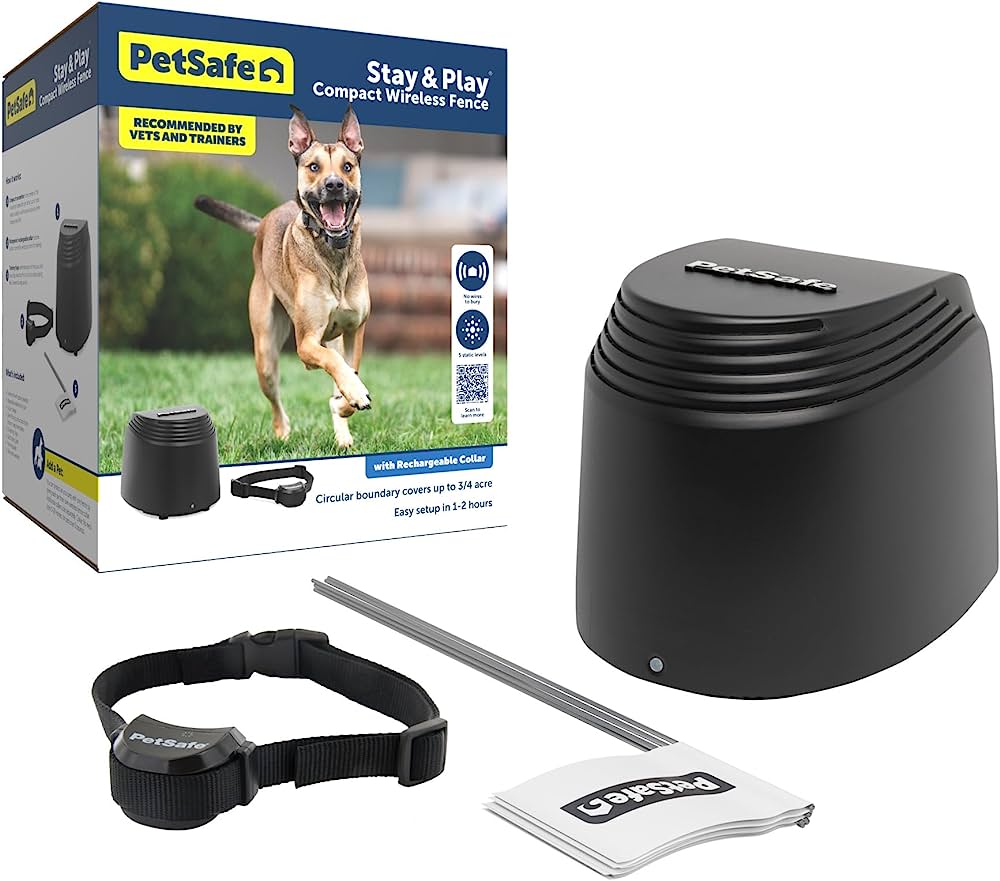
Maintenance and Care for Pet-Containment Fencing
Proper maintenance and care are essential to ensure the longevity and effectiveness of the pet-containment fencing system. Here are some key maintenance steps to consider:
Regularly checking the condition of the fencing
Regularly inspect the condition of the pet-containment fencing system to ensure it is in proper working order. Check for any damage to the wires, transmitters, or receiver collars. Look for signs of wear and tear or any loose connections that may affect the functionality of the system. Promptly address any issues to maintain the system’s effectiveness.
Inspecting and repairing any damaged parts
If any parts of the pet-containment fencing system are damaged or not functioning correctly, repair or replace them as needed. This may involve replacing damaged wires, securing loose connections, or replacing batteries in the transmitter or receiver collar. Regularly examine and test the system to identify any necessary repairs or replacements.
Cleaning and removing debris from the fencing
Over time, debris such as leaves, branches, or dirt may accumulate around the pet-containment fencing system. Regularly clean and remove any debris to ensure it does not interfere with the functionality of the system. Clearing the area around the wiring and receiver collar will prevent blockages or false alarms.
Replacing batteries or power sources
If the pet-containment fencing system relies on batteries or other power sources, regularly check and replace them as needed. Dead or low batteries can affect the functioning of the system, leading to potential breaches in the boundary. Ensure that the power source is sufficient and reliable for the specific needs of the system.
Common Issues and Troubleshooting for Pet-Containment Fencing
While pet-containment fencing systems are generally reliable and effective, there may be occasional issues that arise. Here are some common issues and troubleshooting steps:
Interference with the signal
Occasionally, the pet-containment fencing system signal may be interfered with by external factors such as other electronic devices or natural obstacles. If the system is experiencing interference, try adjusting the sensitivity or range settings to mitigate the issue. Relocate the transmitter if necessary to find a location with minimal interference.
False alarms or warnings
In some cases, the pet-containment fencing system may emit false alarms or warnings, indicating that the pet has crossed the boundary when they have not. This can be caused by environmental factors or inconsistencies in the system. Check for any loose wires or connections that may be causing the false alarms. Adjust the system settings or consult with the manufacturer or a professional for troubleshooting assistance.
Pets challenging the boundaries
Some pets may test the boundaries of the pet-containment fencing system, attempting to cross or overcome the deterrents. In such cases, reassess the system’s intensity or stimuli level. Increase the intensity or provide additional training to reinforce the boundaries. If the challenges persist, consult a professional for guidance to address the specific behavior and ensure the pet’s safety.
System malfunctions
In rare instances, pet-containment fencing systems may experience malfunctions or complete failures. If the system is not functioning correctly, thoroughly check all components, connections, or power sources for any visible issues. Consider contacting the manufacturer for technical support or seek professional assistance for repairs or replacements if needed.
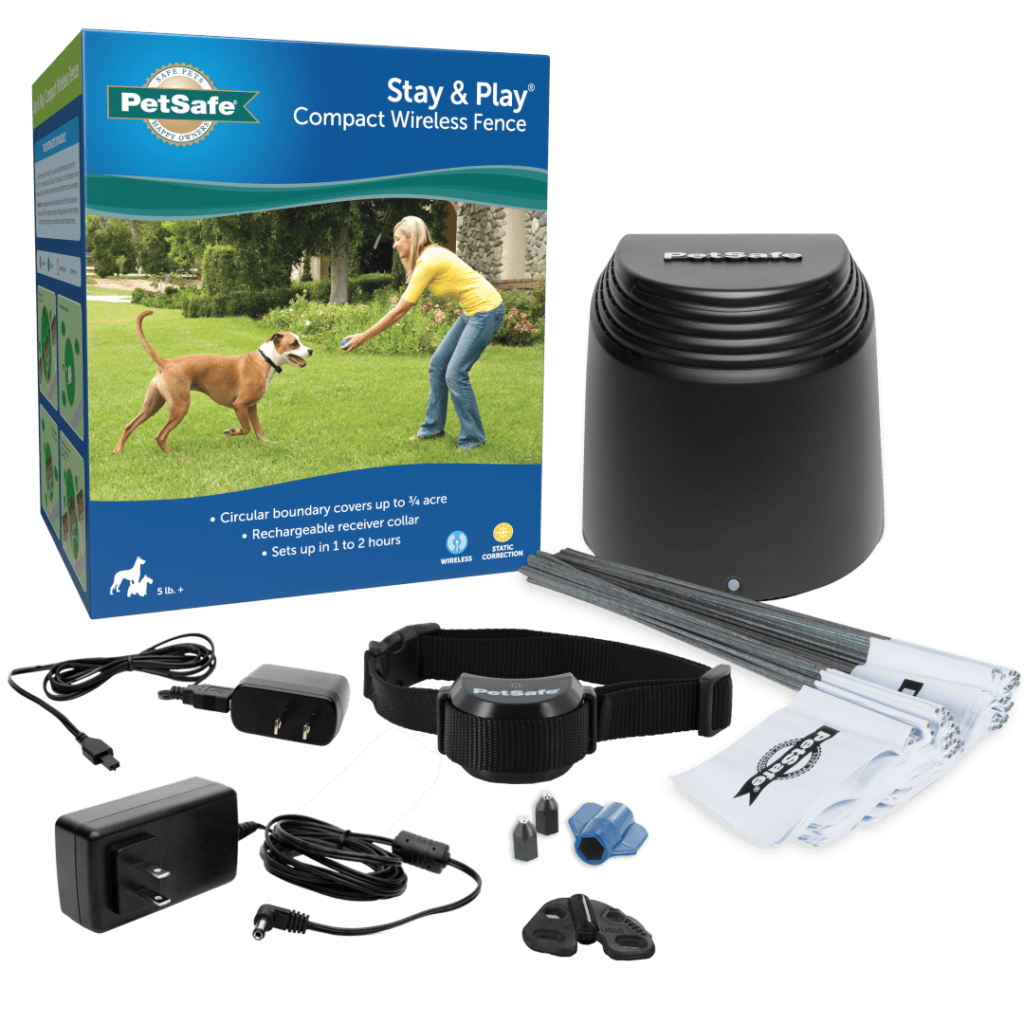
Expanding or Modifying Pet-Containment Fencing
As the needs of pets and property owners change over time, it may be necessary to expand or modify the pet-containment fencing system. Here are some considerations for such modifications:
Adding or removing boundary flags
Boundary flags serve as visual cues for pets to understand where the boundaries are located. If needed, add or remove boundary flags to reinforce the pet’s understanding of the designated boundary. These flags act as temporary markers until the pet becomes familiar with the boundaries.
Extending the coverage area
If the property size or layout changes, it may be necessary to extend the coverage area of the pet-containment fencing system. Consult the manufacturer’s guidelines to understand the limitations and possibilities for extending the system. This may involve adding additional wires or adjusting the settings to accommodate the new boundaries.
Adjusting the correction levels
Pets may require different correction levels based on their size, breed, or sensitivity. Some pet-containment fencing systems offer adjustable correction levels, allowing pet owners to customize the intensity of the deterrents. Consider adjusting the correction levels based on the pet’s response and behavior to ensure suitable containment.
Upgrading to a different type of pet-containment fencing
As technology advances and new innovations emerge, it may be beneficial to upgrade to a different type of pet-containment fencing system. Evaluate the current system’s performance and consider the features and benefits of newer systems. This may involve transitioning from a wireless system to an in-ground system or upgrading to a more advanced model that offers additional features or functionality.
Legal Considerations for Pet-Containment Fencing
Before installing a pet-containment fencing system, it is important to consider any legal regulations or restrictions that may apply. Here are some factors to keep in mind:
Local regulations and restrictions
Check local ordinances or regulations that may impact the installation or use of pet-containment fencing. Some areas may have specific requirements regarding the height, materials, or visibility of fencing systems. Ensure compliance with these regulations to avoid potential fines or legal issues.
Neighborhood and community guidelines
Some neighborhoods or communities may have their own guidelines or rules regarding pet-containment fencing. Homeowners’ associations or community boards may have specific requirements or restrictions on the appearance or functionality of the fencing systems. Review these guidelines and ensure that the chosen system adheres to the community’s standards.
Obtaining necessary permits or approvals
In certain cases, obtaining permits or approvals may be required before installing a pet-containment fencing system. Check with local authorities to determine if any permits are necessary and follow the appropriate procedures. Failure to obtain the necessary permits or approvals may result in penalties or forced removal of the fencing system.
Liability and responsibility for pet-containment fencing
Consider the liability and responsibility associated with pet-containment fencing. While these systems are designed to keep pets within a designated boundary, unforeseen circumstances or system malfunctions may occur. Ensure that appropriate precautions are taken, such as posting warning signs or securing liability insurance, to mitigate potential liability issues.
Alternatives to Pet-Containment Fencing
While pet-containment fencing offers an effective solution for keeping pets safe, there are alternative options to consider. Here are some alternatives to pet-containment fencing:
Traditional fencing options
Traditional physical fencing is a common alternative to pet-containment fencing. This may involve installing a wooden, metal, or vinyl fence around the property to create a secure enclosure for pets. Traditional fencing offers a visible and physical barrier that keeps pets contained and prevents them from escaping. It may be a suitable alternative for pet owners who prefer a more conventional approach.
Leash and supervision training
Leash training and supervision can be an effective alternative to pet-containment fencing, particularly for smaller pets or in environments where physical fencing is not feasible. By keeping pets on a leash and supervising their outdoor activities, pet owners can ensure the safety and well-being of their pets. This option requires constant attention and may restrict the pet’s freedom compared to pet-containment fencing.
Indoor pet safety solutions
For pet owners who are unable to provide outdoor space for their pets or prefer to keep them indoors, indoor pet safety solutions can be considered. This may involve creating a designated indoor area, using pet gates or crates, or installing pet-friendly barriers within the home. Indoor pet safety solutions provide a controlled environment for pets, ensuring their safety and minimizing potential hazards.
Professional pet-sitting or boarding services
In cases where outdoor freedom is limited, or if pet owners require temporary containment solutions, professional pet-sitting or boarding services can be utilized. These services provide a safe and supervised environment for pets when outdoor freedom is not available or appropriate. Professional pet sitters or boarding facilities ensure that pets are cared for and have the opportunity for exercise and socialization.
Tips for Choosing a Pet-Containment Fencing Provider
When selecting a pet-containment fencing provider, it is essential to choose a reliable and reputable company. Here are some tips to help you make an informed decision:
Researching and comparing different providers
Conduct thorough research and gather information about different pet-containment fencing providers. Compare their offerings, features, and prices to determine which provider best suits your needs. Consider reading reviews, testimonials, or customer feedback to gain insights into the quality and customer satisfaction of the provider’s products and services.
Reading customer reviews and testimonials
Customer reviews and testimonials provide valuable insights into the experiences of other pet owners with a particular provider. Read reviews on independent websites or platforms to identify any potential concerns or positive aspects. Genuine and informative reviews can help you make an informed decision and choose a provider that meets your expectations.
Inquiring about warranties and customer support
Check whether the pet-containment fencing provider offers warranties or guarantees for their products. Understand the duration and coverage of the warranty to ensure that you are adequately protected. Additionally, inquire about the provider’s customer support or technical assistance. A reliable provider should offer responsive and helpful customer support to address any concerns or issues that may arise.
Requesting on-site consultations and quotes
Consider requesting on-site consultations to assess the requirements and challenges specific to your property. This will provide an opportunity to discuss your needs and expectations with the provider and receive tailored recommendations. Additionally, request quotes from different providers to compare prices and determine the most cost-effective option.
Costs Associated with Pet-Containment Fencing
Pet-containment fencing systems involve various costs in terms of purchase, installation, maintenance, and potential additional expenses. Here are some cost considerations to keep in mind:
Initial purchase and installation costs
The initial purchase cost of a pet-containment fencing system varies depending on the type, brand, and features. Wireless systems tend to be less expensive compared to in-ground or electric systems. In-ground or electric systems may require professional installation, which will incur additional costs. Consider the initial purchase and installation expenses when budgeting for a pet-containment fencing system.
Maintenance and repair expenses
Pet-containment fencing systems may require periodic maintenance or repairs, such as replacing batteries, wires, or other components. These expenses should be factored into the overall cost of the system. Consider the frequency and potential costs of maintenance or repairs when evaluating the long-term affordability of the chosen pet-containment fencing system.
Potential additional expenses (e.g., batteries)
In addition to the initial purchase and installation costs, there may be additional expenses associated with pet-containment fencing systems. Wireless systems, for example, may require regular battery replacements for the transmitter and receiver collar. Some systems may rely on electricity, resulting in ongoing energy costs. Evaluate the potential additional expenses and determine their impact on the overall cost.
Comparing costs with alternative pet safety measures
When considering the costs associated with pet-containment fencing, it is important to compare them with alternative pet safety measures. Traditional fencing options, professional pet-sitting or boarding services, or indoor pet safety solutions may have different cost implications. Analyze the costs and benefits of each option to determine the most suitable and cost-effective solution for your specific needs.
Conclusion
Pet-Containment Fencing provides pet owners with a practical and effective solution to ensure the safety and well-being of their pets. By establishing secure boundaries, pet-containment fencing prevents pets from wandering off into dangerous situations while allowing them to enjoy outdoor freedom. It is crucial to consider various factors when choosing a pet-containment fencing system, including the pet’s size and breed, property size and layout, installation and maintenance requirements, and budgetary considerations. Proper installation, training, and maintenance are essential for the system’s effectiveness. It is important to understand the legal considerations, review alternatives to pet-containment fencing, and ensure that a reliable provider is chosen. By taking these factors into account, pet owners can enjoy the benefits of pet-containment fencing and provide their pets with a safe and secure outdoor environment.
